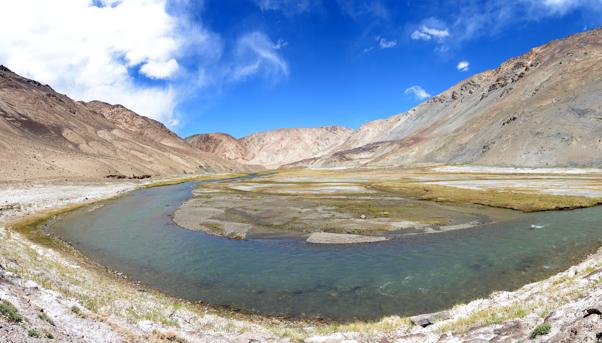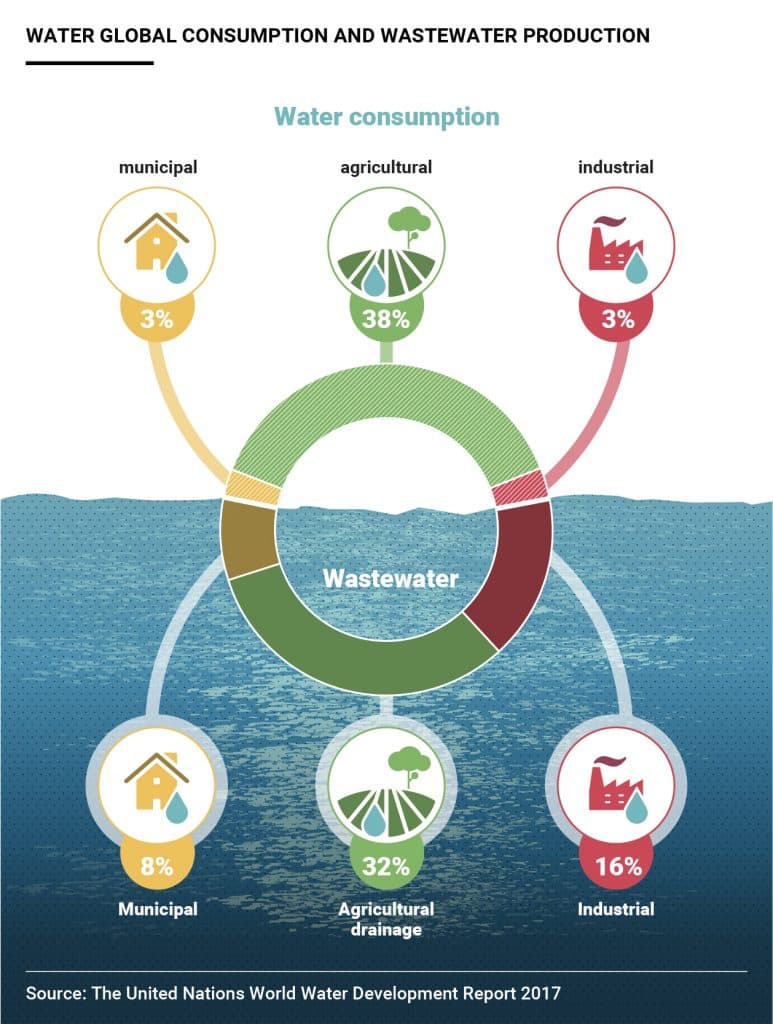
Crop failure, power shortages, mass migration… All of these events have a shared cause: water, whose growing water scarcity is bound to accentuate the divide between rich and poor, developed and underdeveloped in the 21st century.
This most precious of resources is having a decade dedicated to it by the United Nations as the international organization seeks to rally its member countries to address a problem that threatens to worsen the lives of billions.
In a speech made during the general assembly of the international organization in New York in September, Miroslav Lajčák, the assembly’s new president, called for more to help mitigate this challenge.
«Scarcity of water – exacerbated by climate change or humanitarian disasters – can cause tensions between people, communities and countries», he told a meeting of the High Level Panel on Water. «As we have seen, these tensions can quickly escalate into violence».
The Panel, which consists of 11 sitting heads of state and government and a special adviser, is coordinating the search for ways to develop and manage water resources. In a bid to boost awareness and rally support for its campaign, the Panel is overseeing what has been declared the International Decade for Action, “Water for Sustainable Development”, beginning next year.
The campaign aims to help the international community meet one of the goals set under the 2030 Agenda for Sustainable Development: water and sanitation for all.
«We will need more than action from governments to achieve (this goal)», he said. «Strengthening water infrastructures and systems costs money. And we will need a lot more of it, from different sources. We also need to create environments in which innovation and entrepreneurship can flourish».
Given the global scale of the challenge, Lajčák said the U.N. would need help from all fronts: civil society, the private sector, financial institutions and national and regional authorities.
The Economic Impact of the Water Scarcity Problem in the World
The water scarcity problem is one of the most serious risks facing the world at every level: social, economic, political and environmental. It is becoming acute as climate change exasperates efforts to provide water to a growing population. It is already manifesting itself as a problem in parts of the world, emphasizing the need to manage the natural resource in a sustainable way with the appropriate infrastructure.
Although water covers 71% of the Earth’s surface, only 4% is freshwater and only 0.5% of this water is suitable for human consumption, according to the U.N. More than 2.1 billion people still lack access to safely managed drinking water and about 40% of the global population face water scarcity.
The 2016 Water Scarcity & Drought Summit in Australia
Regions faced with drought could see their gross domestic product (GDP) declined by as much as 6% by 2050, according to estimates presented at the 2016 Water Scarcity & Drought Summit in Australia. Those able to manage their water resources, meanwhile,
could see their GDP grow by 6% during that period. Less availability of freshwater and the greater use of it could reduce the amount available to cities by as much as two-thirds by 2050. And with an expected 50% increase in food production, by 2030, demand for water could rise by 40-50%. The increasingly intensive use of water will cause a decline of two thirds of available water in cities by 2050. With the production of food by 50% by 2030 the correlated demand for water will rise 40-50%.

The Water Scarcity Problem: The Solution Created in Tajikistan
The need for international cooperation – also known as “hydrodiplomacy” – in the management of water across borders was reiterated at the U.N. general assembly by Tajikistan President Emomali Rahmon. He said the goals that the international organization had set itself could only be reached in this way, with the use of every available resource, whether it be human, financial or scientific. Water scarcity is a big issue in his country as well as the rest of Central Asia. The most important source of water for the region is the Amu Darya and Syr Darya Rivers, which flow into the Aral Sea.
They have about 77 cubic kilometres of water, 96% of which is used for irrigation. The rivers in turn are fed by the glaciers in the mountainous region. But one regional news website says the water from these glaciers could drop by a third by 2050 due to global warming, leading to a reduction in the flow of the rivers. For a country like Tajikistan with eight million people and only 7% of its land arable, it could prove to be disastrous. It already rations water to favor farming and avoid power shortages suffered every winter by thousands of families, denying them of light and heat.
It is for this reason that the country is placing a lot of hope on the Rogun Dam being built on the Vakhsh River in the mountainous Pamir region. Not only will the world’s tallest dam at 335 metres help the country manage its water better but also double its energy production. Built by Salini Impregilo, it will be a rockfill dam with a clay core.
Water Management in Las Vegas: a Water Scarcity Solution
Water management was also the reason for the excavation of a tunnel under Lake Mead near Las Vegas. Also built by Salini Impregilo, water is drawn from a pipe fixed at the bottom of the lake, fed to the tunnel and then sent to a treatment plant before going to the city. By taking water from the bottom of the lake, the city does not risk running dry when the surface level of the lake goes down in times of drought. This is a real and effective example of solution to face the water scarcity problem in the world.

